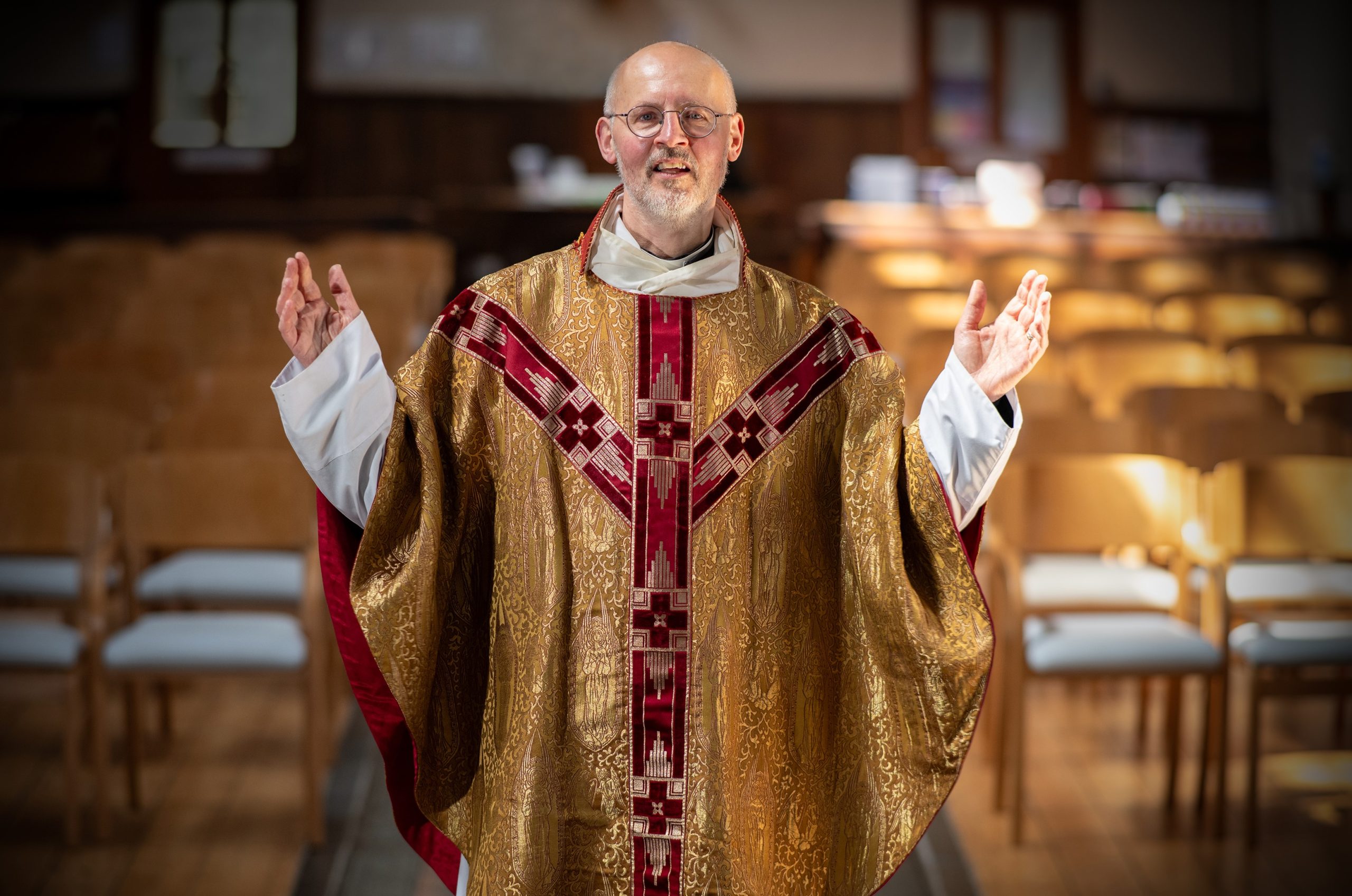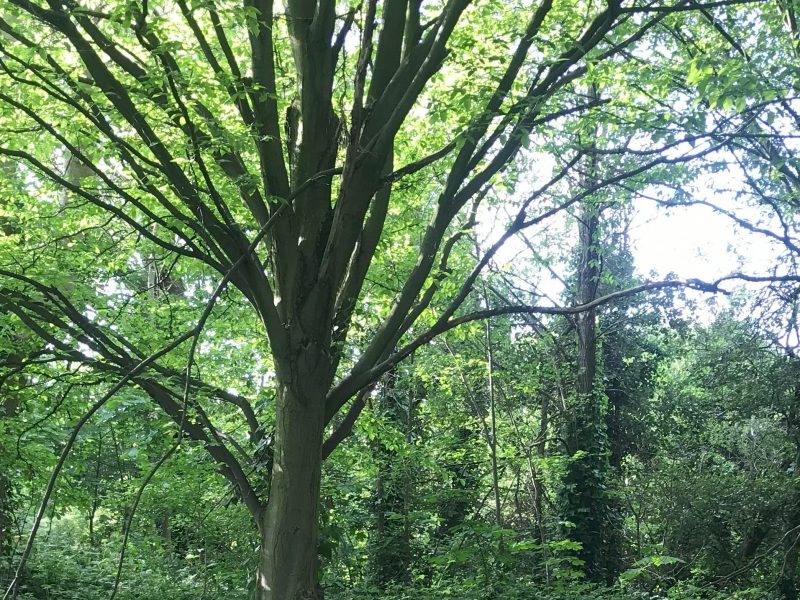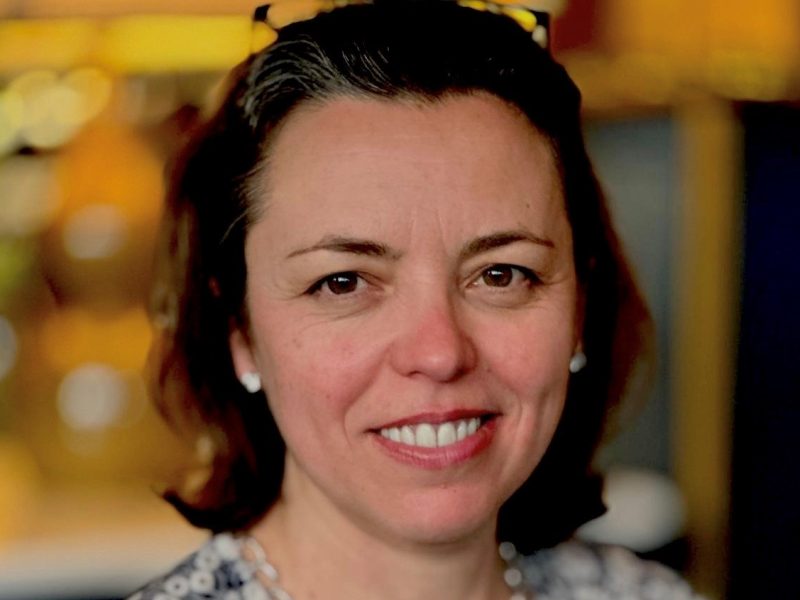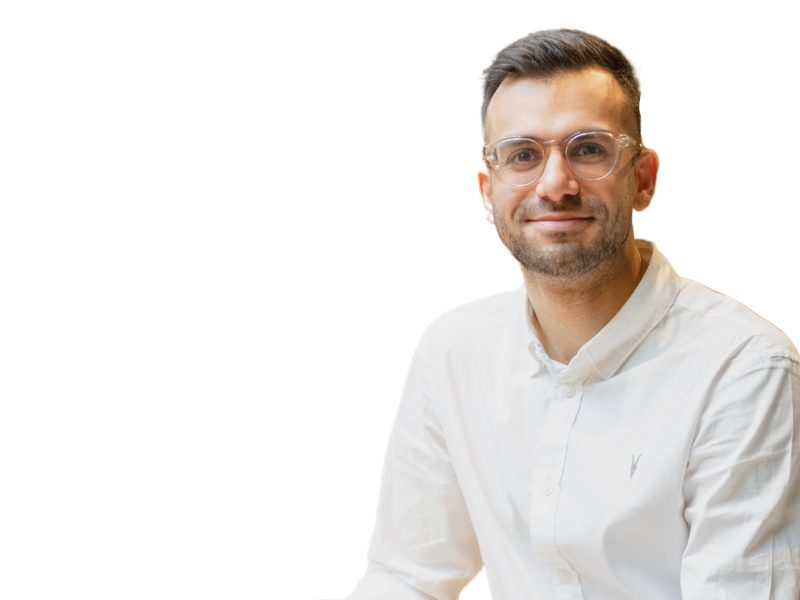By the Mole On The Hill
Photograph by Sarah Louise Ramsay
Grandad, is that the biggest building on the edge of the Hill?
St Mary’s? I suppose it must be.
Are all the people who go there holy?
I wouldn’t go that far, Lass. But they do say they do a lot of good things there.
Ah well then, they must be holy.
Phil Ritchie, aged 50, has been vicar of St Mary’s for less than half a year, so he’s cautiously finding his feet. But he still has the same convictions he developed as a teenager in Coventry. His parents were teachers and not particularly church-goers, although his father had for a time been a priest. They were socialists and members of CND.
“When I was seven, I was in the choir at the parish church next to Coventry Cathedral, so my parents started coming back to church. In the 1980s there was a big resurgence of CND, and we were involved in that; in fact, I was treasurer of Earlsdon CND. Our church was just starting to link in to social justice, doing things like meals for the homeless, but it still felt new.
“I was a typically average student in a Coventry comprehensive: into Pink Floyd, Genesis. I joined the Militant Tendency and used to sell the paper in the centre of Coventry. We hated the Socialist Workers. We were Trotskyist infiltrators into the Labour Party! Tony Benn was a massive hero. I had to do my A levels twice because I was deeply idle.”
Despite the academic idleness, Phil got into Manchester University to read politics and religion, and to be an enthusiastic participant in the music scene.
“The Smiths were just disappearing, and there were new bands like the Manic Street Preachers, Oasis, Inspiral Carpets and The Charlatans. I did join a church. I’d wake up bleary-eyed after clubbing late into the night and go to church on Sunday morning. I discovered the Anglo-Catholic version of the church with a lot of ritual and Christian socialism. Those two elements have been with me ever since.”
When he finished his degree, Phil thought of becoming a priest; he went on a three-day selection conference but was rejected, so he trained to be a teacher and got a job teaching RE and sociology.
“It was quite challenging. I found it really difficult being in front of a load of kids who were not interested in RE or sociology. I loved some of it, but I was only 24 and I didn’t have the discipline to be in charge of kids at that age. So, Paula and I – we had met at Manchester − went to do VSO in Tanzania for two years.”
After VSO, Paula and Phil were by this time married. Feeling at a loose end, they went to Brighton, she to teach, he to do an MA in Renaissance English Literature. He applied again to be a priest, this time successfully; after training, Phil returned as a curate to St Nicholas in Brighton, and eventually to St Mary’s, Primrose Hill.
“Here we’re part of an inclusive church. We have a wide variety of people, but generally this church would label itself ‘liberal catholic’, which means it’s open and politically active. There’s a sense in which you have to hold the space in the church for people with different views. There are people from all across the political spectrum here. I would say we preach social justice. In the pulpit at Christmas, I preached about Gaza and the awful violence of warfare. The events of 7 October were terrible, and our hearts go out to families in Israel whose loved ones have been murdered or taken hostage. The horrors of warfare continue in Gaza now and so many thousands have lost their lives. The issues are complex and go back many years before these recent events. How can we best support the individuals and communities who are affected close to us?”
“I think it’s entirely appropriate to discuss these things in our community, since we call ourselves an inclusive church. We are what we are: a traditional, liberal catholic church. We want to be that, and to be as open as possible. Open hearts, open doors, open minds. Also, I’ve always been keen on LGBT issues, helping people explore who they are.”
There’s a lot going on at St Mary’s. The youth work is expanding, based for some of the time at the church, but increasingly going into prisons and schools. There is the night shelter once a week, where homeless people can come and get a meal, sleep in the church and have a cooked breakfast in the morning, all done by church members and volunteers from the wider community.
And there is the school. “Our relationship with St Paul’s has gone through fascinating changes. In days gone by, you had to attend the church to come to the school, but now with falling rolls there’s no obligation. It’s a great school and we still have strong links with them. In a way I’m quite grateful. People need to come to church because they want to do so, not because they want to get their child into school.”
Ceremony is hugely important at St Mary’s. “The Eucharist, the sharing of bread and wine, is at the heart of my sense of how I live spiritually. But it speaks to a shrinking number of people now. How do we make that come alive for more people? We have to be honest. We have to ask ourselves: what are the other ways people are thinking about creation, the environment, the green agenda? How is the church going to be part of that?”
The English Hymnal was edited in 1906 by Vaughan Williams and Percy Dreamer, the vicar of St Mary’s, so it’s not surprising that the choral tradition is important at St Mary’s. “We have a good choir. Silence and music are the most important things for how we worship on a Sunday. We are fortunate that the Camden Choir is based here.”
And the brewery has started production again.
It all sounds very good. You should go down there some Sunday, Grandad.
Steady on, Lass. It might be inclusive, but I doubt they’d welcome a mole with open arms.



